Category pages target the keywords that consumers search for most frequently. But optimizing category pages for organic search rankings can be difficult, as default category templates on ecommerce platforms tend to hold less text than other pages.
What follows are seven category page elements that improve rankings on highly competitive keywords.
1. Start with Metadata
Title tags and meta descriptions are the basic form of content optimization. The title tag is the most influential on-page element that sets your page’s keyword theme and, combined with the meta description, influences the search terms the page ranks for.
Title tags and meta descriptions are embedded in a site’s HTML code. Both are typically accessible to optimize in content management systems. I’ve addressed title tags and meta descriptions in detail at “SEO How-to, Part 6: Optimizing On-page Elements.”
2. Make Headings Relevant
Next, start at the top of the visible page and optimize the heading tags — H1, H2, and so on — to help search engines understand the context of the content in a particular section. The primary heading at the top (usually an H1) usually reinforces the title tag’s theme for the entire page. Subheads such as H2 and H3 headings emphasize supporting themes.
For example, in the image below, Wayfair uses the full keyword phrase “Pendant Lighting” rather than just “pendants,” as many lighting stores do. The entire phrase is repeated throughout the site’s navigational links as well, sending the stronger “pendant lighting” signal to search engines. The result is that Wayfair outranks its competitors in a search for “pendant lighting.”
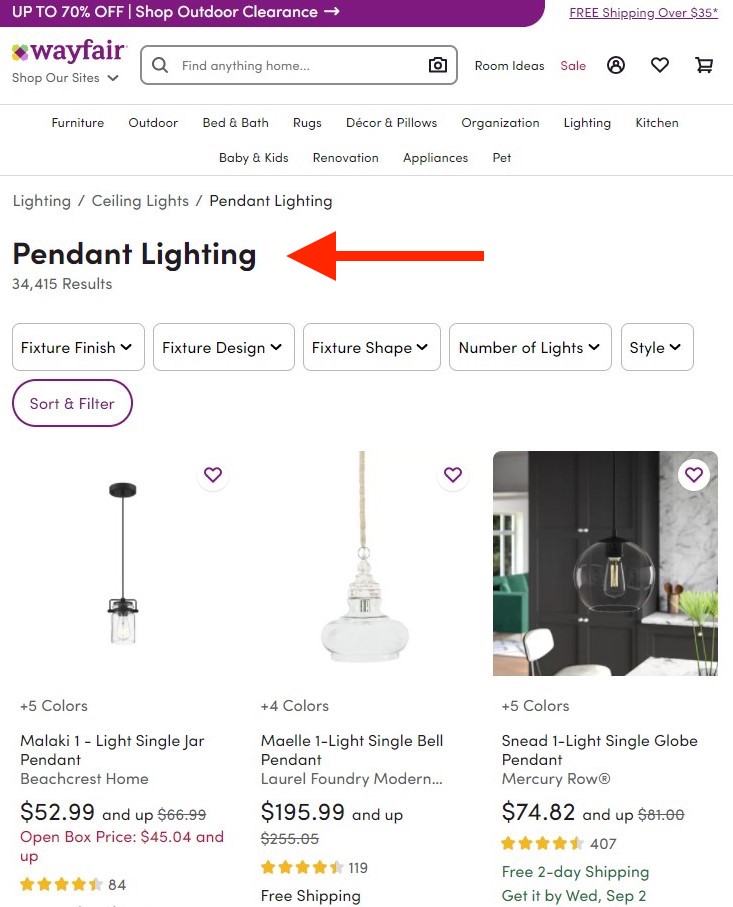
Wayfair’s “Pendant Lighting” heading reflects the primary keyword for the page.
3. Include Text
Many designers and brand advocates despise body copy. But it’s critical for organic search performance. Text doesn’t need to dominate the page or even appear on the top view. Even a short phrase is better than nothing.
For example, Tiffany & Co.’s “Engagement Rings” category page (below) shows how even the most visually dominant products can use text.
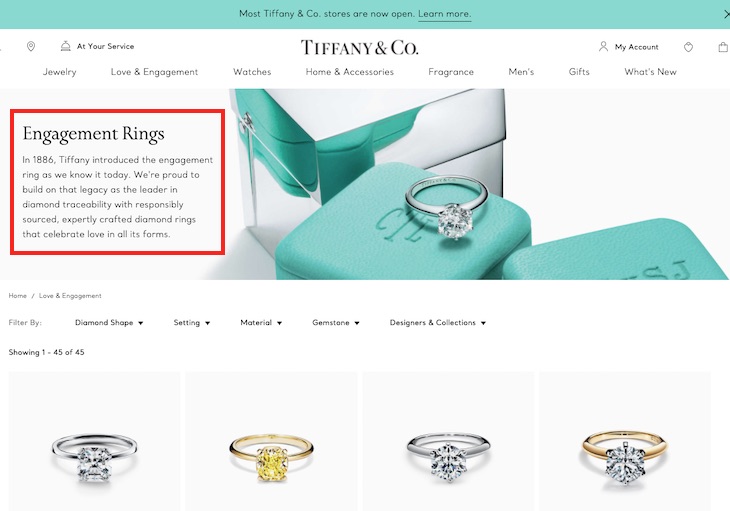
Tiffany & Co. places well-spaced text on its Engagement Rings category page.
Remember, body content doesn’t have to be multiple paragraphs. Focus on descriptive keywords that fit naturally without repeating them artificially.
4. Use Featured Content
Category pages can advertise sale items, loyalty programs, related products, or other messaging that you want shoppers to absorb. Use those features for organic search optimization, too.
First, make sure that a feature’s descriptions are coded as text rather than embedded in an image. Visual search has come a long way, but it’s not used in search-ranking algorithms. And make sure the text is optimized with descriptive language and keywords.
For example, the Tiffany & Co. Engagement Rings category page includes a feature promoting “The Guide to Diamonds.” The accompanying text reads, “Discover how Tiffany diamonds are crafted to be brighter and more vibrant.” Note that the text includes the famous branded term of “Tiffany diamonds.” The overall feature description speaks to the company’s key brand promise, accomplishing a marketing objective along with optimizing for search engines.
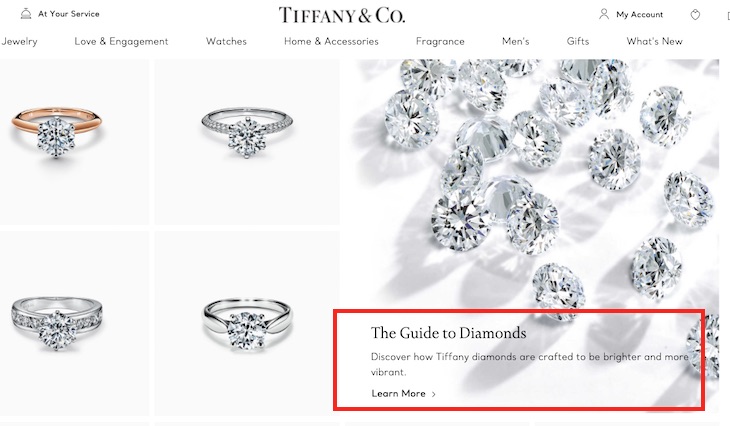
The Tiffany & Co. “Engagement Rings” category page includes a feature promoting “The Guide to Diamonds.” The feature’s description accomplishes a marketing objective along with optimizing for search engines.
5. Make Link Text Relevant
Using vague language as link text misses a strong opportunity to increase the relevance signal of the linking page and the destination. “Learn More” and “Click Here” are meaningless to search engines, as are linked images with no text at all.
For example, the “Pendant Lighting” category page for retailer Shades of Light, below, invites shoppers to “Explore” with the link text. “Explore” sends no relevance signals to search engines. However, Shades of Light also includes an adjoining link using the subcategory name, such as “Glass Pendants.”
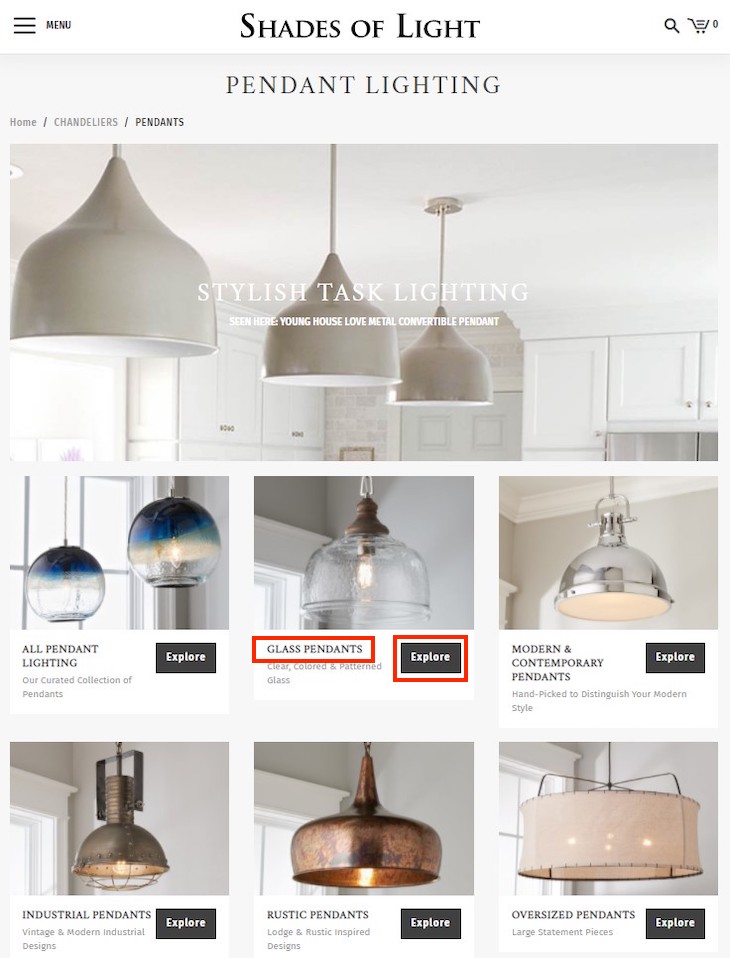
Shades of Light links from the “Pendant Lighting” category page to each subcategory using the word “Explore,” which is meaningless to search engines. Importantly, however, the subcategory name, such as “Glass Pendants.”
6. Emphasize Category Navigation
The primary purpose of category filters is to help shoppers find products. But category navigation also affects the indexation, authority, and relevance of each page in organic search. Thus including relevant words in the navigation and filters will benefit rankings.
For example, Wayfair’s faceted navigation, below, includes “Kitchen Island” text, which links to that subcategory page. Every page in the “Ceiling Lights” category uses that navigation module. Hence every page links to the Kitchen Island subcategory with keyword-relevance link text. As a result, Wayfair’s Kitchen Island lighting page is likely to rank for the 163,000 related monthly U.S. searches in Google, plus other engines.
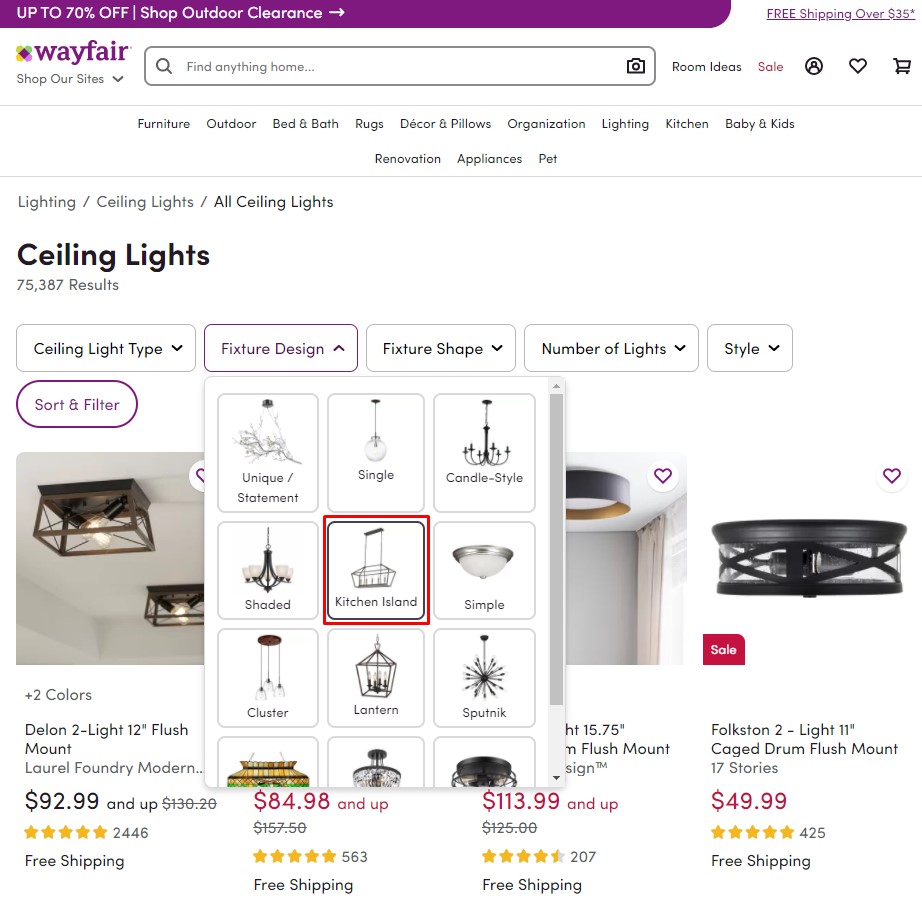
Wayfair’s faceted navigation for the Ceiling Lights category sends relevance signals to the filtered subcategory pages it links to, such as the Kitchen Island page.
Make certain that search engines can crawl your faceted navigation before optimizing it. Otherwise, the effort will be futile.
7. Header and Footer Links
The same opportunities in category navigation are available in the sitewide header and footer. However, including links to every ecommerce subcategory and filtered page in the header and footer would be obnoxious for shoppers and over-optimized for search algorithms.
Use header and footer links judiciously to the most valuable category and subcategory pages. Include pages based on keyword research and keyword mapping, in addition to those with high business value.
For example, Fat Brain Toys, a manufacturer and retailer of educational toys and games, slips three links in its footer to pages that aren’t linked elsewhere: “Award Winning Toys,” “Christmas Toys,” and “Toy Catalog.” The link to the Christmas toys page is there to provide visibility during the holiday selling season. The other links are phrases with many searches.
However, links to SEO-related keywords should not outnumber links for other purposes, and long lists of links should never be placed in text fields or below the footer.
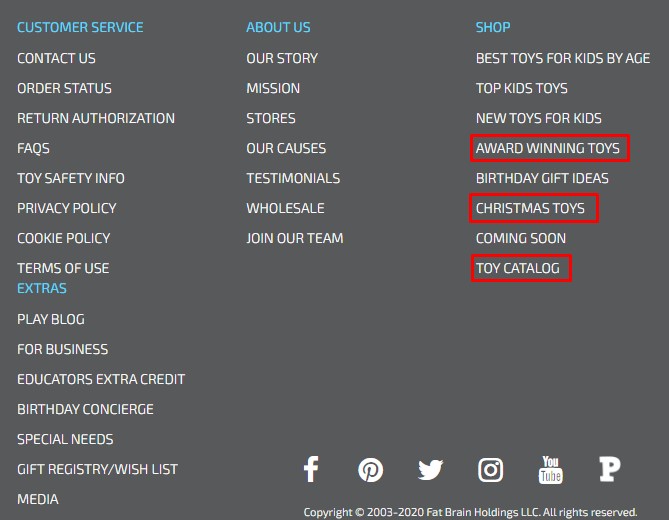
The footer navigation for Fat Brain Toys links to three pages that have organic search keyword value: Award Winning Toys, Christmas Toys, and Toy Catalog.




